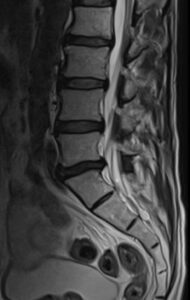
Dr. Petya Stefanova
Teacher
Assistant at the Faculty of Medicine at Sofia University and resident physician in Neurology at Sofiamed University Hospital.
Questions
Summaries
Videos
Audios
What is the main function of the autonomic nervous system (ANS)?
March 16, 2024
Where is the ANS regulated mainly in the brain?
March 16, 2024
Which vitamin deficiencies can play a role in the development of dementia?
March 14, 2024
Is Babinski sign positive in amyotrophic lateral sclerosis (ALS)?
March 14, 2024
Here are four descriptions related to neurological status, including one that represents typical findings in a patient with amyotrophic lateral sclerosis (ALS):
March 14, 2024
Which of the following clinical cases would include the ALS in the differential diagnosis?
March 14, 2024
What pathophysiological processes in the nervous system lead to the symptoms seen in amyotrophic lateral sclerosis (ALS)?
March 14, 2024
Is amyotrophic lateral sclerosis (ALS) associated with genetic factors?
March 14, 2024
Which of the following characteristics is associated with amyotrophic lateral sclerosis (ALS)?
March 14, 2024
Which symptoms are characteristic of an absence (petit mal) seizure?
March 6, 2024
Which symptoms are characteristic of a grand mal seizure?
March 6, 2024
A 60-year-old man presents to the emergency department with sudden-onset right-sided weakness and difficulty speaking. His symptoms began approximately 2 hours ago. On examination, you note right hemiparesis and expressive aphasia. His blood pressure is within normal limits, and there are no signs of trauma. A non-contrast CT scan of the head shows no acute abnormalities. What is the most likely diagnosis?
March 1, 2024
What does it indicate when, during the Latent Paresis test (Mingazzini Strumpel test), the patient’s left arm and leg exhibit weakness and descend (like shown on the picture)?
January 3, 2024
Parkinson’s Disease Differential Diagnosis Questionnaire
October 18, 2024
Role of the Direct and Indirect Pathways in the Extrapyramidal System: Balancing Motor Control
October 14, 2024

The Unified Parkinson’s Disease Rating Scale (UPDRS)
October 11, 2024
Lewy Body Dementia with Parkinsonism versus Parkinson’s Disease
October 11, 2024

Protective Factors for Parkinson’s Disease: Physical Activity, Smoking, and Caffeine
October 6, 2024
Alpha-Synuclein vs. Tau Protein: A Comparative Overview
October 6, 2024
Diet Recommendations for Patients with Multiple Sclerosis
August 6, 2024
Wallenberg Syndrome (Lateral Medullary Syndrome)
August 6, 2024
No videos found
Fake Smiles, Real Damage: How Digital Joy Breeds Fear and Anger
May 3, 2025
Understanding Neuropsychological Evaluations: What to Expect
February 25, 2025
Невропсихологическо изследване – индикации, провеждане и резултати
February 24, 2025
Невропсихологическо изследване – индикации, провеждане и резултати
February 24, 2025





